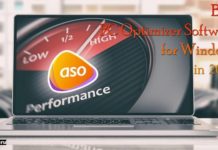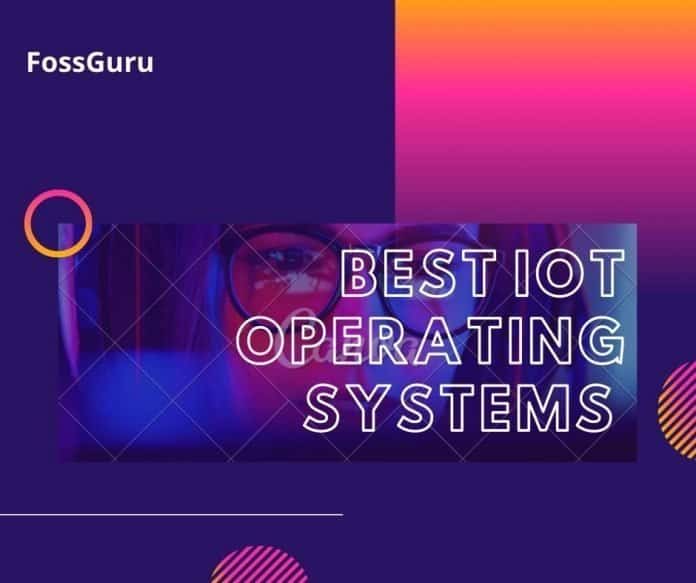IoT operating systems are designed to perform a specific task constantly on the Internet of Things devices. Like other operating systems internet of Things connects the IoT device and the total procedure like power supply, memory, integrated systems, and processing capability. However, it is an embedded system for data connectivity between devices and the internet.
IoT OS connects and communicates over the network like a car, digital television, ATM booth, traffic signal, airplane control, digital camera, point of sale, digital meter, digital media receiver, and many other possibilities. The world is changing for the Internet of Things, so many technology giant companies are investing a lot in making embedded systems iot. As a result, knowing various types of IoT OS is required. In today’s discussion, we will talk about the best 20 IoT operating systems.
20 best IoT operating systems
For any IoT project, operating systems are the requirements for its successful operation at the Modern Internet of Things system following the cloud computing architecture. Though the memory of that architecture is very few, the performance is extraordinary. Some of the IoT operating systems are very common to programmers.
1. Contiki
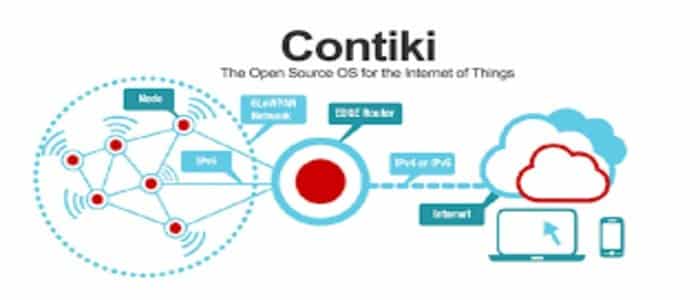 Contiki was invented in the year 2002 as an Open-source IoT operating system. It is prevalent for efficiently running using internet protocols IPv4 and IPv6. With the low-power microcontroller, it can perform beyond the expectation. Contiki supports wireless standard RPL, 6lowpan, and CoAP. Contiki is very much suitably workable, even with a low-speed internet connection.
Contiki was invented in the year 2002 as an Open-source IoT operating system. It is prevalent for efficiently running using internet protocols IPv4 and IPv6. With the low-power microcontroller, it can perform beyond the expectation. Contiki supports wireless standard RPL, 6lowpan, and CoAP. Contiki is very much suitably workable, even with a low-speed internet connection.
Basic Features
- Contiki IoT operating system provides multitasking proficiency, which contains a built-in Internet Protocol Suite.
- You need 3 kb RAM and 30 kb ROM to run the operating system.
- This platform uses protected architecture.
- It is a very lightweight, mature, and flexible operating system.
- The IP protocol of this OS supports an 8-bit or 16-bit microcontroller.
- The other protocol is CoAP, RPL, 6LoWPAN, and rime.
- You can use it for commercial and industrial purposes.
2. Windows 10 for IoT
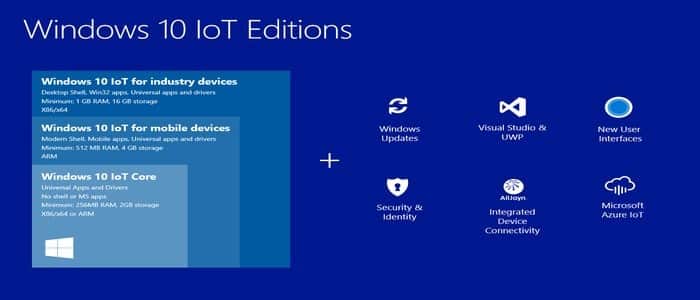 The Internet of Things l who knows the visual studio and Microsoft ecosystems or may choose Windows 10 for IoT. This core edition is free to use and easy to download. But the limitation is that you can not run Win32 apps on the Pi 2.
The Internet of Things l who knows the visual studio and Microsoft ecosystems or may choose Windows 10 for IoT. This core edition is free to use and easy to download. But the limitation is that you can not run Win32 apps on the Pi 2.
Windows 10 for IoT is available in three different versions. The first is the IoT mobile, built on ARM architecture. The second one is the IoT core to support Intel’s Raspberry Pi and Atom processors. The final IoT type is Windows 10 Enterprise, of which most features are found in desktop applications. But it is limited to running a single app.
Basic Features
- Windows 10 for IoT is designed to fulfill your business needs.
- It allows you to use the power of Windows to create a unique solution securely.
- It is fast approaching towards IoT market.
- For the intelligence edge, it built intelligent devices.
- Some examples of Windows 10 for IoT are as follows:
- Misty Robotics, Askey TurboMate, Innowi ChecOut M, Johnson Controls GLAS thermostat, Keith & Koep Cocktail Booster, ActionPoint, Rockwell Logix 5000, Advantech, and Redback Technologies.
3. Google Brillo IoT / Android Things
 Android Things is the newest version of Google Brillo IoT. Google Brillo is an Android-based embedded IoT platform of Google. Considering the MCU platform, it is designed to use low power and low memory to connect with the nearby connected devices. It supports 32-64 MB RAM, BLE technology, WiFi, Bluetooth low energy, and many other Android-based embedded technologies.
Android Things is the newest version of Google Brillo IoT. Google Brillo is an Android-based embedded IoT platform of Google. Considering the MCU platform, it is designed to use low power and low memory to connect with the nearby connected devices. It supports 32-64 MB RAM, BLE technology, WiFi, Bluetooth low energy, and many other Android-based embedded technologies.
The second endeavor of Google is to create android based new OS for returning to the war of the IoT platform. In San Francisco, during the Google I/O 2015 Developers Conference, they introduce Brillo as a new IoT OS.
Google Brillo IoT Operating systems can help out to competent appliance manufacturer developers to make their products connectable with another number of things. For example, it can be switching the light to a smoke alarm. You can utilize Brillo with various hardware platforms, which are lower-level versions.
Important Features
- Google Brillo IoT OS is super slim because everything an IoT developer requires is a built-in feature of that OS.
- Because of its easy-to-understand matrix and crash reporting feature, its device administration has become easy.
- You can update the service through the web console.
- This IoT operating system ensures secure communication.
- Google Brillo IoT is also planning to introduce Nest and Nest ecosystem devices.
Get Google Brillo / Android Things OS
4. RIOT IoT OS
RIOT comes to mind if you consider the name of any friendly Internet of Things operating system. Moreover, RIOT is a free and open-source operating system that supports most low-power microcontroller architecture and IoT devices. It powers the IoT like Linux and empowers the internet. It is secure, durable, user-friendly, and opens a standard operating system.
If you love to think out of the box, you may use this Internet of Things OS because it runs on several platforms, including embedded devices. The most common Architectures of this OS are Cortex-M0 -M0+ -M3 -M4 -M7, Cortex-M23, ESP8266, ESP32, MIPS32, MSP430, PIC32, RISC-V, x86, AVR, and ARM7.
Since RIOT is free software, you can redistribute and modify this operating system. RIOT community developed its library, but some external libraries have separate licenses.
Important Features
- RIOT is developer-friendly, resource-friendly, and IoT-friendly.
- Standard C and C++ programming offers tools such as GCC, gdb, and Valgrind.
- Using the native port, it develops under Mac or Linux OS.
- Due to ultra-low interrupt latency, it has real-time capability.
- Tools and utilities like 6LoWPAN, CoAP, CBOR, IPv6, RPL, and UDP.
5. Apache Mynewt
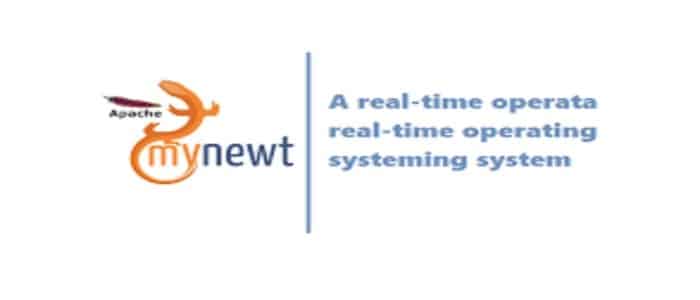 Apache Mynewt is another popular Internet of Things Operating System that you can like for its tiny embedded features. With the constraint of power, memory, and storage, it can work for a long time. The source code of this free and open-source software is distributed under Apache License 2.0.
Apache Mynewt is another popular Internet of Things Operating System that you can like for its tiny embedded features. With the constraint of power, memory, and storage, it can work for a long time. The source code of this free and open-source software is distributed under Apache License 2.0.
Among the various microcontroller like industrial IoT systems and medical equipment, it is handy with the 6kb kernel.
Important Features
- Apache Mynewt isis enriches with Lua interpreter.
- Check the statistics of regression testing and other logs for the significant package.
- You can get the console access and shell package.
- To allow client code, it supports file system abstraction.
- Watchdog timer of multistage.
- Dynamic heap and pool memory management.
- Mutexes, Semaphores, and system time.
- This IoT OS also supports preemptive multithreading and tickets priority-based scheduling.
6. Huawei LightOS
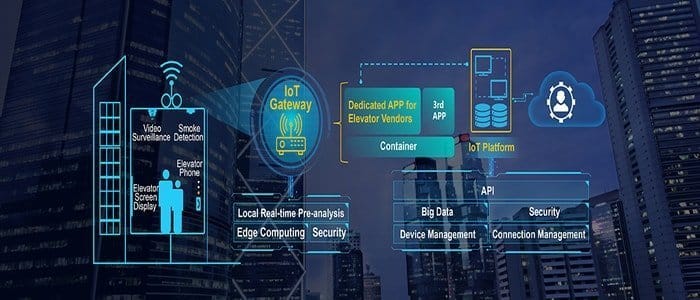 The real-time kernel-based Huawei LightOS IoT operating systems are well known for their lightweight nature. It is compatible with many components of basic operating systems like task, memory, type, communication mechanism, and queue. It also performs better in low-power and memory scenarios.
The real-time kernel-based Huawei LightOS IoT operating systems are well known for their lightweight nature. It is compatible with many components of basic operating systems like task, memory, type, communication mechanism, and queue. It also performs better in low-power and memory scenarios.
Huawei LightOS supports developers in developing open-source IoT ecosystems in the technology ecosystem for commercial use and other aspects. It has corporate with several partners to launch an open-source development kit and industry solution. On the other hand, it offers its developer one-stop software architecture to improve development efficiency and lower development requirements.
The Huawei LightOS was developed by the Chinese technology giant Huawei in 2015. The standard API of this IoT operating system makes it diversified. It has minimized your extra expenditure for developing IoT equipment. Compared to other kernels, Huawei LightOS has the lowest one, 6kb.
Important Feature
- Huawei LiteOS supports various cores like Cortex-A7, Cortex-M3, Cortex-M4, and Cortex-M7.
- It accumulates all the static functions, represents real-time data, consumes low power, and provides dynamic and static memory algorithms.
- The well-organized time management offers system time, tick time, and software time.
- It processes excellent inter-process communication, which includes Event and Massage queues.
- Huawei LiteOS is capable of static function compaction, Semaphore, and Mutex.
7. Zephyr IoT OS
The small and real-time-based IoT OS Zephyr is one of the best choices for Internet of Things developers. C and assembly language by the Linux and Wind River Systems developed this open-source IoT operating system. It emphasizes microcontrollers and supports multiple architectures. It supports many IoT platforms, including Cortex-M33, Cortex-M3, ARM (Cortex-M0, ARC, RISC-V, Nios II, Xtensa, Cortex-M4, Cortex-M23, Cortex-R4, Cortex-R5), x86, x86-64.
Zephyr IoT OS provides a wide range of flexibility and freedom of choice. You can connect small-footprint IoT devices and integrate them with cloud computing. With the Cloud agnostic, you can connect with transport layer security to any cloud. This small-footprint kernel is designed for resource constraints systems that can use simple embedded environmental sensors and IoT wireless gateways.
The kernel of the Zephyr IoT operating sys offers various features like Multiple scheduling algorithms, AMP, SMP, Multiple scheduling algorithms, and Single address space. As the configuration system for this Internet of Things, OS uses Kconfig and Device tree. This RTOS is based on CMake, which allows it to be built on Windows, Mac OS, and Linux.
Important Features
- Since Zephyr IoT OS is free and open-source software (FOSS), it is highly configurable. Besides that, it uses device tree support ( DTS).
- It has the mechanism of device firmware update and management.
- For non-volatile storage, it provides a virtual file system interface with several file systems.
- It has a set of protocol stacks like OMA LWM2M, MQTT, IPv4 and IPv6, Bluetooth Low Energy, CAN, 802.15.4.
- This Internet of Things OS requires 8 kb of RAM and 512kb of ROM.
- It also provides a system development kit with appropriate documentation, threat modeling, code review, and penetration testing facility.
8. Snappy Ubuntu Core
Snappy Ubuntu Core is a secure and open-source OS for IoT. It is a transactional version of Linux OS which runs on a highly secure Linux package. This IoT operating system doubled down the Internet of Things. Using this same kernel, system software, and libraries of classic Linux, its users can develop snaps on their Ubuntu. Since IoT requires less memory, power, and functions than a CPU, it has a minimal distribution of things. The main feature of Snaps Ubuntu Core IoT OS is that you can use the same desktop and cloud technology.
Snappy is like a container of software packages. It is confined to a sandbox, so corruption is strictly resistance. So it limits your damage. For the common vulnerability, it scanned regularly. The cloud management of Snappy Ubuntu Core is admirable because of its efficient cloud server and platform. Snappy Ubuntu Core requires A Raspberry Pi 2 or 3, a microSD card, an Ubuntu Core image, a monitor with an HDMI interface, an HDMI cable, and a USB keyboard.
Important Features
- Snappy Ubuntu Core provides strong security on IoT devices.
- It uses Ubuntu community research.
- If required, it can roll back the automatic up-gradation.
- It ensures the exact application is run by ensuring key-based authentication.
- Snappy Ubuntu Core uses straightforward declarations for system access.
- It offers powerful slot-and-plug (“interface”) functions.
9. TinyOS
If you plan to use a component-based and embedded wireless sensor network, you can use the awesome TinyiOS. It is an open-source operating system that is developed for low-power wireless devices. Besides sensor networks, it is also used for ubiquitous computing, intelligent buildings, cloud computing architecture, personal area networks, and smart meters.
The operating system is written in C language. It is basically in the form of Java and shell script. This Internet of Things Operating System is helpful for the microcontroller, which has networking capabilities. It is suitable for resource constraints devices having a few kb RAM. It is designed so that a shallow power device can run it very well.
Important Features
- TinyOS IoT operating systems support various microcontroller families and radio chips.
- The code is highly robust, with very few bugs.
- This Internet of Things Operating System is excellent for sensor networking and low-power operation.
- This IoT operating system supports secure networking like CC2420 and 802.15.4/ZigBee radio chips.
- Besides a few limitations like understanding the programming model and writing difficulty, it may be the best IoT OS.
Get TinyOS IoT Operating Systems
10. Google Fuchsia
Google Fuchsia is another trustable IoT OS that is currently developing under Google. Without any official announcement, it became popular in the year 2016. Its symbolic meaning and color are fantastic, which is a new OS. The “Pink + Purple makes Fuchsia. Chrome OS and Android are also the creation of Google.
The open-source IoT OS Google Fuchsia came from the Zircon OS family on 15th August 2016. This microkernel-based operating system is run on a low-power device. Besides the microcontroller embedded system, it runs on various smartphones, personal computers, and tablets. Some specialists think this IoT OS may be replaced by Android OS shortly.
Important Features
- Google Fuchsia is workable on the Android Studio emulator.
- Some specialist doubts the replacement of Chrome OS by Google Fuchsia.
- This IoT Operating system is written in C, C++, and Dart.
- It is one of the best open sources by Google.
- The color of Google Fuchsia is red and purple, which means a combination of red and blue.
- Fuchsia is the name of a flower.
- Fuchsia also supportable POSIX, a subset of Portable Operating System Interface.
11. TizenRT IoT Operating Systems
The IoT Operating system TizenRT is based on FlOSS and powered by the Linux kernel. This open platform OS has shifted to consumer electronics like Smart TVs, wearables, home kitchen appliances, and many security-related products. It supports low-end and low-cost IoT devices. With an LCD button without a display, it can navigate your requirements.
TizenRT IoT OS aims to cover all types of low-end devices. This lightweight platform is suitable for typically equipped with Cortex-M/R processors with MPU, which has a Flash capacity of less than 16 MB and RAM of less than 2 MB. This RTOS-based environment model has some limitations, like it can be inferior to a Linux environment and can not load additional modules at runtime. To solve the issue, it has adopted some environments like POSIX API, Shell, BSD Socket API, and Kconfig build configuration.
Important Features
- The Linux-based IoT Operating System TizenRT is workable on mobile platforms and small embedded systems.
- Its upgraded version is used in our day-to-day appliance.
- This lightweight kernel-based IoT OS is monolithic and comparable to AndroidOS.
- Mobile operators can customize their offer with this IoT OS according to demographic configuration.
- It is flexible to the developer, device manufacturer, and mobile operators.
- TizenRT is thinking of adding some intelligence and voice features.
12. Raspbian IoT Operating Systems
Raspberry Pi is one of the most usable platforms used in IoT devices. It is a series of small single-board computers. It is a highly flexible OS you can use as your IoT device. You can integrate third-party operating systems with this IoT OS, like Ubuntu Core, Windows 10 Core, and OSMC. It can be suitable if you plan to develop some IoT projects.
Raspbian is versatile, cheap, and powerful compared to the competitors in the IoT market. It provides opportunities to pre-install, experiment, and use for educational purposes. Though the project is done by Debian Linux, Fork, and many other OS, Raspberry Pi are also useable.
Important Features
- The kernel of Raspbian is similar to the Unix kernel.
- It uses a computer algebra program.
- It promotes Scratch and Python as the primary programming language.
- The default firmware of Raspbian is a close source; however, unofficial open source is also available.
13. Amazon FreeRTOS
Amazon FreeRTOS is a secure real-time IoT OS that receives over-the-air updates. It has many demo applications with qualified boards. FreeRTOS is a free and open-source downloadable OS where you can contribute, enhance and change the code through GitHub. Since it is under MIT open-source license, you can use it for personal and commercial use.
There are three types of Amazon FreeRTOS IoT OS such as minor, central, and long-term support. It is perfectly useable on a microcontroller-based embedded system that is easy to use, code, deploy, and maintain. With this Amazon FreeRTOS operating system, you can securely connect to AWS Cloud and develop any cloud-based IoT system. The manufacturer of microcontrollers like connectivity sensors, security peripherals, and Ethernet controllers may benefit from the IoT OS. Enterprises can also use the OS to gain operational and business efficiency.
Important Features
- Amazon FreeRTOS extends the FreeRTOS kernel.
- It is one of the large ecosystems of existing tools.
- The rich software libraries allow standard functions like WiFi or Ethernet, over-the-air (OTA) update features, data encryption and critical management support.
- It is suitable for Industrial customers to utilize microcontroller-based devices for generating data.
- The consumer manufacturer uses this for business purposes, embedding IoT OS on home appliances, wearable technology, and intelligent lighting manufacturers to standardize microcontroller-based devices.
- It is also suitable for B2B commercial devices.
14. Embedded Linux
Embedded Linux is an Internet of Things operating system developed for embedded devices and appliances. However, it uses the same kernel as Linux but diffdiffersm Linux OS. The embedded Linux is customizable for Linux OS. This OS has a smaller memory, low power requirement, and runs on specific purpose applications.
The Android operating system is an embedded Linux customized for smartphones, Smart TVs, Wireless routers, Tablet PC, Navigation devices, and other consumer application devices. It is also useable on navigation equipment, spacecraft flight software, networking equipment, personal video recorders (PVRs), in-vehicle infotainment (IVI), machine control, and industrial automation.
Important Features
- Embedded Linux needs low memory, so it supports outdated or low-resource hardware.
- Because of its low-cost feature, it is used for many consumers products.
- Because of being an embedded operating system, it has many suppliers and developers.
- This Internet of Things Operating System supports embedded applications like SQLite, Boa, thttpd, PEG, and NANO.
- It has the flexibility of configuration than other IoT OS.
- Embedded Linux has only 1000kb of memory space, providing faster and more reliable support.
- Busybox, Mobilnux, and Maemo are remarkable platforms of Embedded Linux OS.
15. Mbed OS
Mbed OS is one of the quicker IoT OS for embedded devices. It is a trusted OS to support secured operations. Mbed is an open-source, free operating system with all other IoT OS facilities. You can connect various products with Mbed OS like standards-RTOS kernel, middleware for storage and networking, remote device management, based security, and connectivity stacks.
Mbed OS is specially designed for the internet of integrated networking, connectivity, and security stacks. It allows connecting more than 70 cloud, silicon, module, and OEM partners. The API of Mbed Os allows keeping the code clean, simple, and portable with the advantage of communication security.
Important Features
- Mbed offers a large number of codes and examples to use.
- For the security of internet-based applications, it uses TSL and SSL protocols.
- Its rich library automatically updates the required data.
- The software developer can make a prototype with easy action.
- It has an enormous community of over 400000 developers and 150 development boards.
- You can get IoT project ideas like Soil Moisture Sensors, Waste Management, Anybus Wireless Bolt, and PlacePod Parking Sensors.
16. Device OS
Device OS is another suitable Internet of Things operating system to run your embedded device. This easy-to-use programming framework helps you to write any application and run your microcontroller-based device. It is a platform with integrated hardware, software, cloud infrastructure, and connectivity. From the out of the box, you can deliver OTA updates with a quick and safe method.
Device OS offers to call a function that tells your device to take any action from a remote place. You can send a message to the devise cloud and retrieve a variable for reading the value of the sensor remotely. The setting up of Device OS is elementary, so no custom integration is required to push a remote update.
Important Features
- Device OS provides zero disruption because the device cloud sends immediate OTA updates.
- This Internet of Things Operating System provides a unique intelligence framework and built-in context awareness.
- It manages low-level integration to your hardware by which you can focus your engineering time.
- Device OS IoT OS does not allow plain text, so every message is encrypted and secure.
17. Nucleus RTOS
Nucleus RTOS is one of the best real-time operating systems with 32 and 64-bit embedded platforms. It is designed for industrial, consumer, medical, aerospace, and IoT applications. The latest Nucleus RTOS IoT OS version supports safety certification, power management, process model, and heterogeneous multicore SOCs.
Nucleus RTOS has announced support for Microsoft Azure cloud computing. This close source OS is workable on PowerPC, Altera Nios II, Renesas SuperH, Infineon, ARM, NXP, MIPS, TI, Xilinx MicroBlaze, and others. It also supports MQTT, HTTPS, CoAP, and 6LowPAN.
Important Features
- Nucleus RTOS has already deployed over 3 billion devices with a highly scalable microkernel-based real-time operating system.
- The developer of Nucleus RTOS can use multicore features, including xAMP and SMP support.
- It has the connectivity of Connectivity (CAN, I2C, SPI), USB 2.0, and USB 3.0
- For the low-power design, you can use Power management APIs.
- Nucleus RTOS offers extensive architecture support like Arm, MIPS, and Power.
- For FAT and SAFE, it supports File system software.
18. Nano RK IoT Operating Systems
Nano RK is a real-time-based Internet of Things Operating System from Carnegie Mellon University. It supports wireless sensor networks with multi-hop networking. This OS is currently operated on the FireFly Sensor Networking Platform. It has less than 2 KB RAM and 18 KB ROM. It supports wireless link layer protocols, including RT-Link, WiDOM, b-mac, U-Connect, and PCF TDMA.
Nano RK is good for priority-based preemptive scheduling. It ensures task timeliness and synchronization. The battery power of NanoRK on the network, wireless node, Nano-RK provides CPU and sensor efficiency is limited, so this system uses virtual energy reservations. With the small footprint for its embedded resource kernel (RK), Nano-RK offers timeliness scheduling and rich functionality.
Important Features
- Nano RK provides some Built-in Fault Handling like Task Timing Violations, Stack Integrity, Unexpected Node Restarts, Resource Overuse, Low Voltage Detection, Hardware Watchdog Timers, and Software Watchdog Timers.
- Nano RK IoT OS performs Real-Time Priority Based Scheduling.
- The Scheduling of Energy Efficient based on a-prior task-set knowledge.
- Nano RK offers Tickless Timer and C GNU tool-chain.
- The Eclipse Cloud IDE allows for easy development.
19. Mongoose OS
Internet of Things (IoT) Firmware Development Framework Mongoose OS is an excellent operating system that supports low-power, connected microcontrollers. This IoT OS aims to be a complete environment for operating the connected devices and prototyping besides the development. Another objective is to minimize the time and cost of developing IoT projects.
Mongoose OS is an All-in-one IoT Platform for Small Businesses. It has collaboration with AWS, Google, Azure, Watson support, and reliable OTA updates. Since 2013 it has been empowering commercial projects. This Internet of Things OS is open source under the Apache 2.0 license.
Important Features
- Mongoose OS IoT OS is user-friendly.
- It offers Over the Air (OTA) updating of embedded ICs.
- It provides crypto support with secure connectivity.
- Mongoose OS is written in either JavaScript or C.
- You can easily integrate it with public clouds and private cloud computing like Mosquitto, HiveMQ, Google IoT Core, AWS IoT, Microsoft Azure IoT, IBM Watson IoT, etc.
20. NuttX Real-Time Operating System
The Real-Time Operating System NuttX provides emphasis on small footprint and standards compliance. It supports from 8-bit to 32-bit microcontroller systems. Under the permissive BSD license, it was released by Gregory Nutt in the year 2007. If you use NuttX OS, you do not need to learn any new API program because it is a POSIX RTOS.
NuttX has some similar subsystems similar to Linux. For example, you can use the audio subsystem, a USB system with USB Composite support, Virtual File System (VFS), Memory Technology Device (MTD), and many others. It allows running microcontrollers having less than 8KB of RAM and 32KB of Flash.
Important Features
- Some remarkable features of the NuttX Real-Time Operating System are Fully preemptible, Highly configurable, Naturally scalable, Standards Compliant, Core Task Management, and Modular design.
- This OS is extensible to new processor architectures.
- For priority inheritance, it supports Real-Time and deterministic.
- This Internet of Things Operating System offers Built-in, per-thread CPU load measurements, and a Custom NuttX C library.
- Some other features are the BSD socket interface, On-demand paging, and System logging.
Final Thought
After a lengthy discussion, I think you will be happy with this long list of the Internet of Things operating systems. It is tough to tell which one is the best. It depends on the requirement of the software developers. However, if you find my endeavor regarding IoT OS helpful for you, then please share it with your friends. Thanks for the patience and reading.


